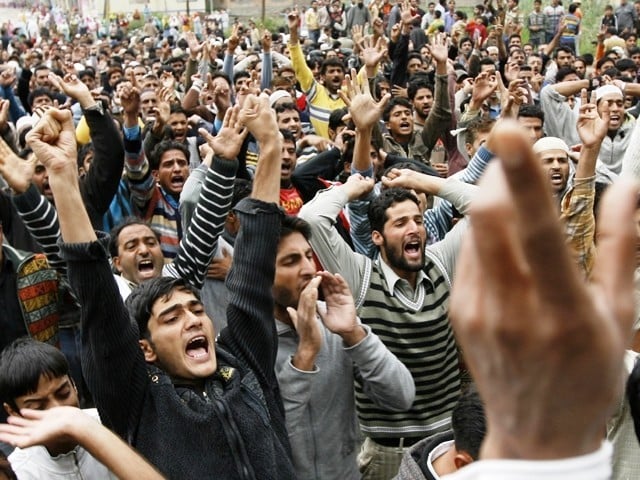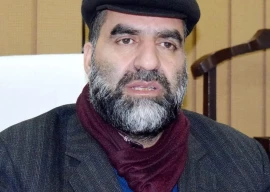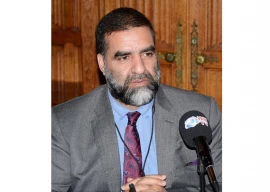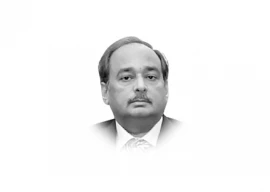
All those arrested are civilians including minors and the elderly, many in their 70s, whose only crime has been to participate in peaceful public congregations to demand for azadi or freedom from the oppressive yoke of India. Many of those arrested, including minors, have been booked under the draconian law, the so-called Public Safety Act, which allows incarceration of anyone without a trial for up to two years.
Pakistan, India should opt for more dialogue: US
The mass uprising has witnessed introduction of new tools of death and destruction. Indian soldiers have employed extensive use of shotguns; they’ve fired more than two million pellets on Kashmiris, mostly youth. These shotguns, rebranded as non-lethal pellet guns, are actually hunting guns, but since Kashmir remains a dark spot of Indian democracy, it has been widely employed to maim and blind people to scare them into submission.
But the public remains defiant. So far, more than 2,000 mass public rallies known locally as ‘Chalo’ gatherings have attracted millions of Kashmiris who have avowedly defied Indian occupation and reiterated their demands for freedom. Despite Indian army attacks on these gatherings causing dozens of fatalities and thousands of casualties, they continue to occur almost on a daily basis across the region.
To halt the spirit of resistance, Indian soldiers have attacked hundreds of villages rampaging thousands of houses with properties worth billions of rupees destroyed. Dozens of mosques have also been desecrated by soldiers who increasingly believe they are defending their Hindu faith by attacking Muslim symbols of worship or identity.
The soldiers have systematically targeted and destroyed crops and fruits, setting fire to rice fields and granaries. They have also vandalised apple orchards – cutting trees or firing pellet guns to damage trees in order to obliterate the mainstay of Kashmiri economy.
Indian forces have also attacked hospitals and ambulances, beaten doctors and paramilitary staff, stopped medical aid to the injured and even arrested the injured from their hospital beds. Hundreds of ambulances have been attacked and damaged and several ambulance drivers injured as Indian forces ruthlessly beat them or target them with live ammunition for transporting injured to hospitals.
Azerbaijan backs Pakistan on Kashmir
In its push to militarise every landmark across the Kashmiri landscape, the army has even occupied schools and educational institutions. In addition, soldiers have targeted teachers and students for they are seen as the driving force behind the current mass uprising. In one such case, a 30-year-old lecturer, Shabir Ahmad
Mungoo, was beaten to death in early August in Khrew, Srinagar.
The inventory of occupation does not end here. In order to threaten and stifle voices that could raise or attract international attention, the military backed government has arrested human rights defenders and banned newspapers. In mid-September, the government arrested noted human rights defender Khurram Pervez a day after he was stopped from attending a UN rights council session in Geneva. There are also several reports of the army and intelligence agencies continuously harassing human rights activities and NGO workers in order to stop them from carrying out any work that could garner international visibility.
Newspapers and journalists who have honestly reported on the sufferings of their people have also been vigorously targeted. Kashmir Reader, one of the leading daily newspapers that had refused to yield to official threats to toe the government line, was banned two weeks back. Its journalists remain a government target as several of them have been stopped and threatened by men in mufti roaming about the streets of Srinagar. I was also a target after I wrote a couple of critical pieces; my house was attacked by the paramilitary soldiers thrice in less than a month causing damage worth thousands of dollars.
Tanks and guns won’t stop Kashmir struggle, says Imran
The growing statistics of the oppression is a grim reminder that India has employed every possible tool of tyranny to control and subjugate Kashmiri masses. But this time the Kashmiri spirit is yet to be tamed though the Indian state has started to activate its stealth mechanisms across the region to confuse or delegitimize the new narrative that emanates unceasingly from Kashmir.
Murtaza Shibli is a journalist, author and communications and security specialist. He lives between London, Lahore and Srinagar, Kashmir. He tweets @murtaza_shibli























COMMENTS
Comments are moderated and generally will be posted if they are on-topic and not abusive.
For more information, please see our Comments FAQ